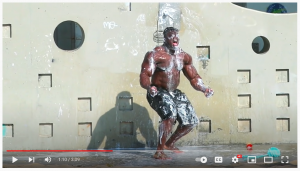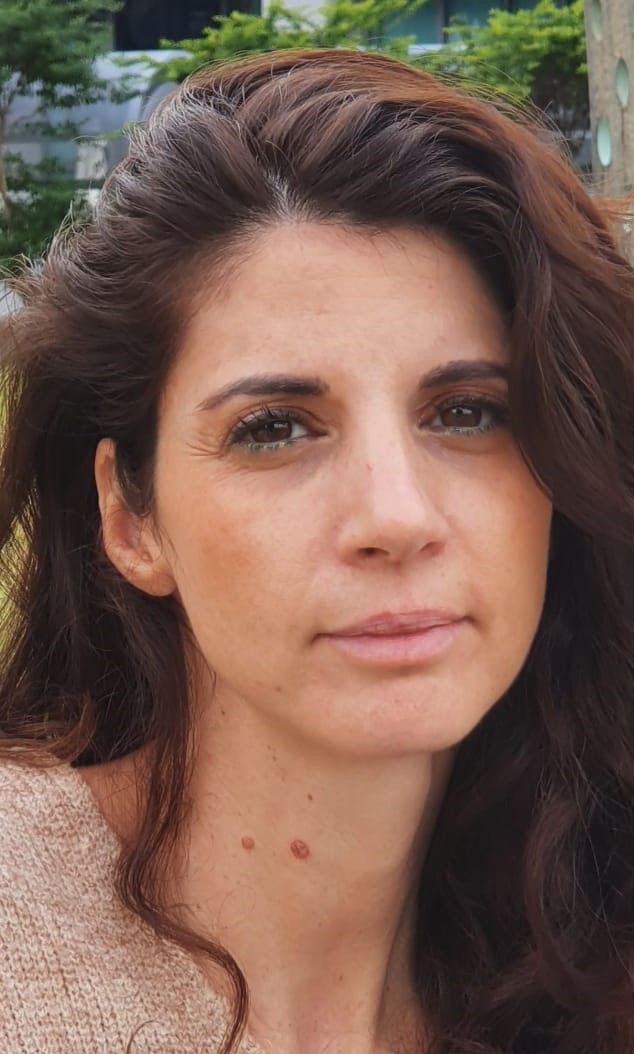Imagine this scene: A man is using a public shower on the beach to wash up after swimming: he puts shampoo in his hair, rubs it in, and then puts his head under the running water to rinse it out. What he doesn’t know, however, is that as he’s trying to rinse out the shampoo, another man is sneakily squeezing more into his hair. No matter how much he rinses, his hair just keeps getting soapier. Initially he’s confused, but the more he struggles to rinse out the soap, the more frustrated he becomes.
The connection between chronic pain and fear
You’re probably asking yourself what a prank video has to do with chronic pain. The man in the video is trying to complete a task completely unaware that something is preventing him from being able to do so. If you’re trying to manage chronic pain without acknowledging the role pain-related fear plays in your life, you’re a lot like the guy in our above scenario. Your efforts will yield few results while you become more desperate and frustrated.
To develop effective strategies for dealing with chronic pain we need to understand and acknowledge the different elements of pain. Like the great boxer Muhammad Ali once said, “The hands can’t hit what the eyes can’t see.”
Fear is a significant aspect of living with chronic pain. When experiencing pain, it’s natural to be afraid of the pain or the danger that pain represents. Fear is a message sent from the primal survival part of our brain that we are under attack and need to act. This fear mechanism is intended to protect us from external threats, like wild animals, fire, or attackers. It activates our primary survival responses: fight, flight, or freeze – get rid of the danger, get away from it, or play dead. When we take any one of these actions and manage to successfully deal with a threat, our brains return to normal functioning. Healthy fear is a natural brain response that helps us survive.
When the body is in a state of chronic pain, our brains interpret our bodies as a constant threat, so the fear mechanism in our brain is exploited and we are unable to get out of emergency mode. When the threat comes from within, there is no place to feel safe and the unrelenting experience can turn healthy fear into trauma.
The difference between healthy fear and trauma
Our brains have evolved to be on the lookout for danger but not to be trapped in a constant state of threat. When we feel perpetually threatened, healthy fear can become trauma, diminishing our ability to regulate our emotions and function normally. Trauma occurs when deeply distressing circumstances become imprinted on our psyche. Normal fear is an appropriate reaction to a realistic threat. Trauma is different; when the fear response doesn’t subside, our body’s alarm system stays on long after the threat is gone.
The impact of trauma
Traumatized people often experience the world as an unsafe place. They may have heightened and unpredictable emotional responses, are more likely to develop mental health struggles, can have strained interpersonal relationships, and sometimes experience further physical pain and illness. In his book, The Body Keeps The Score, trauma expert Dr. Bessel van der Kolk writes,
When we cannot rely on our body to signal safety or warning, and instead feel chronically overwhelmed by physical stirrings, we lose the capacity to feel at home in our own skin and, by extension, the whole world.
Chronic pain can hijack the fear mechanism of our brain and keep it in a perpetual state of threat by continually communicating between the body and the brain that we are in immediate danger. It can rob us of our ability to live in the world with a feeling of safety and security.
How does the trauma of chronic pain get in the way of healing?
Trauma keeps us stuck in a survival state where all other normal brain functions not related to immediate survival are put on hold. When we are just trying to survive, it can be almost impossible to think critically, seek pleasure, relax, or attend to our practical needs. Want to
make a well-thought-out decision? Go shopping? Invest in relationships? Enjoy recreation? Fear says, “Not now, we have to deal with the threat first!” Trauma says, “The threat is never gone!”
Living in survival mode and unable to escape from a constant feeling of emergency created by chronic pain, a person’s life can be overtaken, and their quality of life suffers. Many people affected by chronic pain have been living for years with not only discomfort in their bodies but also an unconscious ‘fear storm’ raging inside the survival systems in their brains. Even with all their efforts and countless treatments they have not been able to successfully eliminate the source of their pain. They cannot escape pain, and daily life demands that ‘playing dead’ is not an option.
The beginning of hope and healing
The cycle of pain, fear and trauma doesn’t have to be a life sentence. One of the most effective ways of bringing healing to the trauma caused by chronic pain is to shed light upon it. Awareness of what is happening inside us robs the wildfire of trauma of the fuel it needs to rage.
When firefighters battle wildfires, they build a firebreak to keep the fire from spreading. A firebreak is a strip of land ahead of a wildfire that is cleared of flammable material to help starve the fire of the material it needs to keep burning.
With the right knowledge and tools, we can build firebreaks that starve the ‘fear storm’ of chronic pain. Through talking about pain and learning about the effects of fear we can help reprogram the brain’s responses to fear. By bringing understanding to our unconscious internal processes, we can limit the extent to which the body is seen as perpetually threatening and bring our bodies and minds into balance. While the fear of living with chronic pain might continue to challenge us, the trauma of feeling like we can’t be safe in ourselves and in the world can be soothed.






